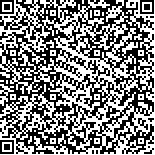| This article has been:Browse 1574Times Download 1542Times |

scan it! |
|
|
| DOI:10.13522/j.cnki.ggps.2017.0484 |
|
| Estimating Evapotranspiration Using the SEBAL Model and Landset-8 RS Data |
|
GUO Erwang, GUO Yifei, ZHANG Lingjie, YAN Chaode, LIANG Zhuanxin
|
|
1. Jiaozuo Water Resources Survey and Design Institute, Jiaozuo 454150, China;2. School of Water Conservancy and Civil Engineering, Northeast Agricultural University, Haerbin 150030, China;3. School of Water Conservancy and Environment, Zhengzhou University, Zhengzhou 450001, China
|
| Abstract: |
| 【Objective】 Evapotranspiration (ET) is a main process in hydrological cycle and its accurate estimation in natural and managed ecosystems is critical to improving water management. The purpose of this paper is to present a new method to estimate ET by taking Guangli Irrigation District in Henan province as an example. 【Method】The method was based on the SEBAL model and the Landsat-8 data; it estimated the net radiation flux, soil heat flux using the land-surface parameters first, and the instantaneous evapotranspiration was then calculated using the energy residual method and the latent heat flux. The SEBAL model assumed the evapotranspiration was constant within 24 hours, and the instantaneous evapotranspiration was thus equivalent to the daily evapotranspiration. 【Result】Comparison with field measurements revealed that the errors of the Penman-Monteith formula in calculating the daily evapotranspiration on 6 May 2014 and 14 September 2015 was 5.2% and 9.4% respectively, while the associated errors of the proposed model was 4.5% and 6%.【Conclusion】The SEBAL model, coupled with the Landset-8 RS data, can offer an efficient and adequate alternative to estimate ET at catchment scale, and its accuracy is comparable with if not better than the Penman-Monteith formula. |
| Key words: Landset-8 data; surface temperature; evapotranspiration; SEBAL model; penman formula |
|
|